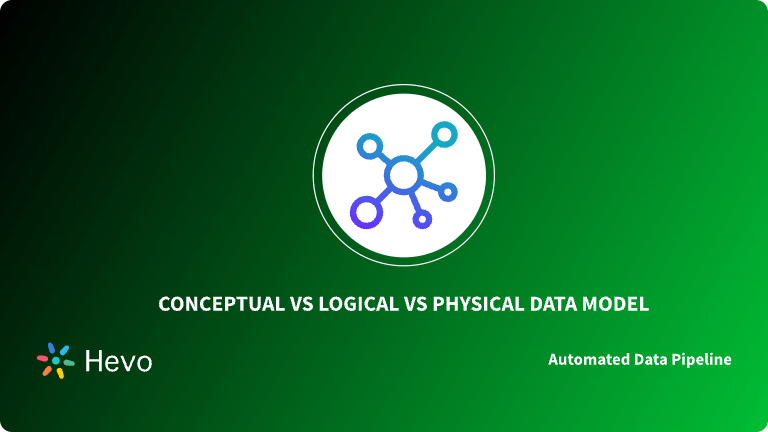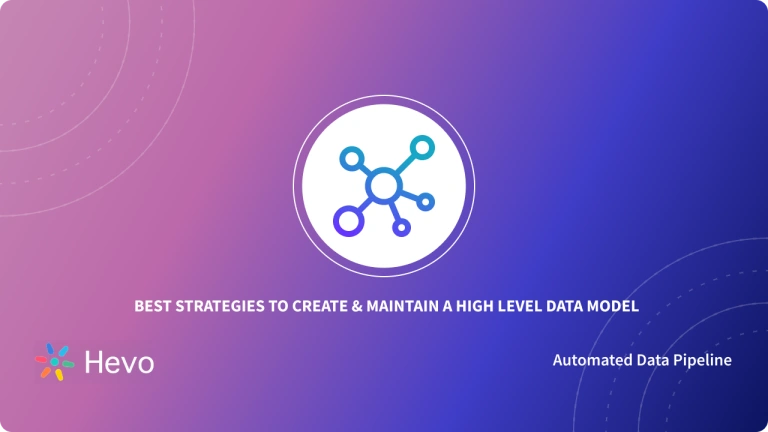Businesses rely on data to drive decisions, uncover trends, and stay ahead of the competition. But raw data is often messy, scattered across multiple sources, and difficult to analyze effectively. ETL data modeling offers a structured approach to transform this chaos into meaningful insights.
Extract, Transform, and Load (ETL) isn’t just a technical workflow—it’s a strategy that ensures data is well-organized, high-quality, and ready for analysis. Whether handling complex datasets, improving decision-making, or scaling operations, data modeling helps businesses turn data into a valuable asset rather than a challenge. In this blog, we’ll break down how ETL data modeling transforms chaos into clarity.
Table of Contents
What is ETL Data Modeling?
ETL (Extract, Transform, Load) data modeling is the process of designing how data should be structured as it moves from different sources into a data warehouse. It helps ensure that raw data is organized, cleaned, and optimized for analysis.
For example, imagine an e-commerce company collecting customer orders from multiple sources—its website, mobile app, and retail stores. ETL data modeling defines how this data should be extracted, transformed (e.g., correcting inconsistencies, removing duplicates), and loaded into a structured format in a central database. This makes it easier for analysts to generate reports and uncover business insights.
How Does ETL Data Modeling Work?
It follows a step-by-step approach to convert raw data into a structured format for analytics and reporting. The process includes the following steps:
- Extract Data
The first step in ETL data modeling is acquiring data from multiple sources, such as relational databases, APIs, cloud platforms, and third-party applications. Collecting raw data in its original format is essential to maintain data integrity.
- Transform Data
Next, the extracted data is transformed to meet the specifications of the target system. This includes data cleaning, deduplication, validation, and reformatting. System logic is applied to standardize the data into a format that aligns with organizational requirements.
- Model the Data
The target system, such as a data warehouse or database, requires data modeling to define relationships between data elements. This process produces three types of models—logical, physical, and conceptual—which structure data tables and field relationships.
- Load the Data
Finally, the transformed data is loaded into the target system, which could be a data warehouse, business intelligence platform, or cloud-based analytics tool. A secure storage system ensures efficient access to data for analysis, reporting, and visualization.
Looking for an easier way to manage your ETL data modeling? Hevo’s no-code platform simplifies the entire process. With Hevo, your team can:
- Effortlessly integrate data from 150+ sources (60+ free sources) through an intuitive interface.
- Transform and load data instantly into your destination without any coding.
- Automatically keep your data updated with seamless workflow execution, reducing manual tasks.
Hevo’s schema mapping capabilities allow you to create scalable data models without the need for complex coding. Plus, Hevo adapts to evolving business requirements, making it easier to manage changing data needs across various scenarios.
Join 2000+ happy customers, including Airmeet, Cure.Fit, and Pelago, who trust Hevo to streamline their data operations and focus on what truly matters—analytics and strategy.
Get Started with Hevo for FreeWhat are the Techniques of ETL Data Modeling?
The analysis process requires several techniques to organize data effectively using data modeling. Here are three widely used techniques:
1. Star Schema Modeling
The star schema is a popular technique that creates a central fact table, which is associated with multiple dimension tables. The fact table includes numerical measures, while the dimension tables store descriptive attributes. Its straightforward layout enables fast and optimized business intelligence queries.
Uses: The star schema is effective in scenarios where rapid feedback and simple visualization are essential.
2. Snowflake Schema Modeling
The snowflake schema is similar to the star schema but adds a layer of normalization by splitting the dimension tables into smaller interconnected tables. This reduces redundancy and organizes data into dependent tables with distinct entries and detailed product information.
Uses: The snowflake schema is ideal for large data warehouses that contain multiple complex data hierarchies.
3. Data Vault Modeling
Data vault modeling is suitable when data changes frequently and needs to scale alongside flexible operations in large data environments. It organizes data into three main components: hubs, links, and satellites. Hubs represent major business entities, links connect them, and satellites store descriptive information.
Uses: Data vault modeling is useful when business requirements are continuously evolving. It enables smooth data integration with incremental ETL changes rather than a complete redesign.
What are the Best Practices for ETL data modeling?
Following are the Best Practices for ETL data modeling:
- Understand Business Requirements: Use data modeling to support business needs and align with organizational goals.
- Choose the Right Schema: Select a schema based on design complexity and scalability, ETL requirements.
- Ensure Data Quality: Implement flexible data validation processes, including cleaning and duplicate elimination, before data transformation.
- Document the Model: Create comprehensive documentation that explains database design parameters and business standards for team coordination and future reference.
- Optimize Performance: Design the model to optimize performance by reducing complex query operations and speeding up processing by excluding unnecessary join fields.
- Plan for Scalability: Structure the model to accommodate future data growth and evolving business needs.
- Maintain Data Governance: Implement data security, privacy protocols, and compliance standards to protect sensitive data.
- Test and Validate Regularly: Conduct regular ETL testing to identify errors, improve ETL workflows, and ensure the model meets performance standards.
What are the Challenges of ETL Data Modeling?
The following are the challenges of ETL Data Modeling:
- Handling Complex Data Sources
Organizations often deal with multiple data types, such as databases, APIs, flat files, and unstructured logs. Integrating these diverse systems into a unified model can be complex. For example, a system that combines real-time IoT sensor data with historical data stored in a relational database can be challenging to model.
Resolution: Using ETL tools with data source connectors helps maintain a modular ETL architecture, addressing real-time and batch processing requirements independently.
- Data Quality Issues
Data errors, duplicates, and missing records can result in unreliable predictive models. For instance, many systems store duplicate records that lead to inconsistent customer data.
Resolution: The transformation process should include automatic rules to validate, cleanse, and remove duplicates from the data.
- Scalability Challenges
As data volumes increase, performance can degrade, impacting query execution times and storage efficiency. For example, a retail enterprise with rising transaction records may experience performance issues in its data warehouse.
Resolution: Data vaults provide scalable modeling methods, which can be paired with query optimization techniques, such as table partitioning and indexing, for improved performance.
- Evolving Business Requirements
Data models need regular updates as organizations adapt their operations. For example, the integration of a new sales channel may require changes to the schema structure.
Resolution: Data vault modeling allows for incremental changes without needing to redesign the entire schema.
- Ensuring Data Governance and Compliance
Organizations often face challenges when managing sensitive data, especially with GDPR regulations that enforce strict compliance. For example, reports containing personal identifiable information (PII) must be encrypted or masked.
Resolution: Data governance policies ensure authorized access through defined roles, responsibilities, and system-based monitoring.
Conclusion
ETL data modeling forms the foundation of data management systems, transforming data into valuable business insights. This approach enhances data-driven capabilities, delivering consistent and accurate data on a large scale while supporting precise organizational decisions. Businesses can simplify the complexities of ETL data modeling by using the right techniques and modern tools, such as Hevo. Implementing industry best practices improves operational efficiency, reduces errors, and ensures long-term model stability.
Want to take Hevo for a spin? Sign up for a 14-day free trial and organize your data flows that nothing before.
Frequently Asked Questions
1. What is ETL data modeling?
During the ETL pipeline process data modeling describes how information gets designed and structured as data passes through the system. The process establishes extraction methods along with transformation steps and loading protocols, which direct data movement toward data warehouses for analysis and reporting purposes.
2. What are the 5 steps of ETL?
The five steps of ETL include:
Extracting data from source systems.
Cleaning and transforming the data.
Validating data accuracy.
Modeling the data for storage.
Loading the data into the target system.
3. What are the four types of data modeling?
The four types of data modeling are:
Conceptual modeling – high-level design of data structure.
Logical modeling – detailed schema of data relationships.
Physical modeling – database implementation details.
Data warehouse modeling – specialized for analytical databases.





